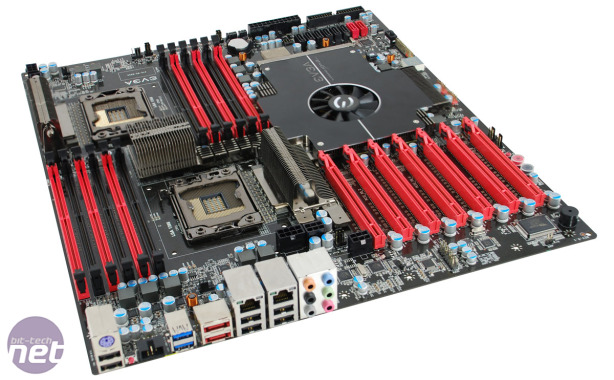
EVGA's Shamino talks about the SR-2 motherboard
Recently we nipped down to EVGA's office to have a chat with famed overclocker Peter Tan - aka Shamino - to talk about his role helping EVGA develop a upcoming unique dual-socket Xeon motherboard with four-way Nvidia SLI support: The EVGA Classified Super Record 2 (SR-2), previously codenamed the W555 motherboard.bit-tech: Why did you choose to make a dual Xeon board and not a more accessible single socket LGA1366 board?
Shamino: We already make the Classified series of X58 boards and we wanted to top that, so we put it another CPU.
BT: How does your SR-2 compared with Gigabyte's GA-X58A-UD9?
Shamino: I've never used the UD9, but $699 seems high compared to the $599 price we're going for with the SR-2.
BT: Dual socket boards aren't usually associated with overclocking, going more for reliability, and that's what traditional brands such as Tyan and Supermicro have built a reputation for. Why would someone buy your SR-2 over one of their products?
Shamino: Because of the fact that we can overclock and pump all this extra voltage and frequency into the CPUs should mean that it's better at handling stock frequencies. It's got more overhead built in, with higher quality components so it should last longer under heavy use. I don’t think reliability and overclocking are at loggerheads, it all depends on the working environment.
BT: The SR-2 can use normal unbuffered 'overclocking friendly' DDR3, right?
Shamino: Yes.
BT: What kind of memory performance do you get from Xeon CPUs then?
Shamino: Xeons are unlike regular Core i7 CPUs, because the they have limited memory multipliers available. On the 5000-series you can go below but not above the 10x multiplier. On the high end chips, that means 1,333MHz memory, but if you're buying a lower end Xeon it's only 8x giving 1,066MHz. That means you have to push the base clock a lot to get high memory speeds.
BT: It's normally the case you can't crank up server and multi-CPU configurations that much in terms of bus speed - what can you get from Xeons in your SR-2?
Shamino: Realistically we can hit 200MHz base clock.
BT: That's still pretty good! 2,000MHz is significant for triple channel.
Shamino: If you run just three DIMMs per channel it's fine, but if you fill all the banks with 12GB on one and 12GB on another - totally 24GB - then about 1,900MHz is tops.
[Shamino commented on this just a few days before running 48GB of G.Skill memory at 1,950MHz on the SR-2. Last we heard, he's still trying to hit the magic 2,000MHz.]
BT: Is that just with more recent 32nm six-core Gulftown Xeons?
Shamino: No, it's with all of the range. Actually on the six-core [Xeon] CPU, overclocking is easier because they have the better IMC (integrated memory controller) that can be set to 1.5x ratio uncore to memory frequency so you don't need to be pushing the uncore so high, whereas the older 45nm Xeons requires a 2x uncore to memory. [This means running 2,000MHz memory required a 4GHz uncore on older 45nm Xeons, but only 3GHz on newer 32nm Xeons].
BT: We've seen some reports that including two Nvidia NF200 chips actually slows down the performance - is that still true for the SR-2?
Shamino: Yes, it adds about two to three per cent latency from what we've seen. The reason we use two NF200s is for four-way SLI. Not quad SLI, four-way. Four-way is having four individual cards while quad-SLI is really just a pair of dual-GPU cards such as the GTX 295. Most SLI boards can run quad SLI, but for four-way SLI - GTX480-480-480-480 you need to use the NF200.

MSI MPG Velox 100R Chassis Review
October 14 2021 | 15:04









Want to comment? Please log in.